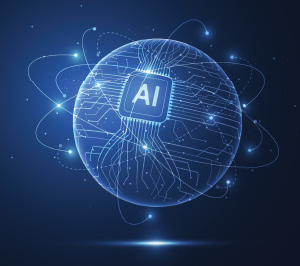AI can help standardize construction industry data

The construction industry generates more data than ever, but much of it is disorganized and not standardized, according to panelists at this year’s New York Build Conference held March 12-13 at the Javits Center in New York City.
Standardization of data is a challenge, leading to inefficiencies and lost time, says Charlie Portelli, digital innovation strategist at Perkins & Will, a Chicago-based global design firm.
Construction firms can start using artificial intelligence to validate data, automate workflows and improve overall decision making.
Boston Dynamics’ Spot, a robotic dog used for site capture and safety monitoring, is making construction jobs safer by taking on high-risk tasks, says Sheena Shook, director of business development at Modulus Consulting, a San Francisco-based construction consulting firm. The robodog automates progress tracking and inspects hazardous areas.
Over time, tools like these will allow for easier data collection and provide AI the framework to spot patterns, says Salvatore Cali Jr., deputy commissioner of public buildings at the New York Department of Design and Construction.
But mass adoption remains a work in progress, according to Benjamin Friedman, lead data scientist with DLR Group, an Omaha, Neb.-based design firm. Stakeholders, from general contractors to field workers, need to not only introduce these tools but stick with them over time.
“Build it; don’t buy it,” Friedman says. “Clean data is required and is hard work. None of this is a ‘pull it off the shelf and it’s going to solve all your problems.’ AI does not work that way.”
Contractor demonstrates robotic solar panel installers

San Jose, Calif.-based electrical contractor Rosendin has demonstrated a new autonomous robotic solution for photovoltaic panel installation, according to Construction Dive.
Rosendin claims the robots will triple installation speeds, enhance worker safety and address the industry’s persistent labor shortage, particularly as commercial solar panels can measure 4 feet by 8 feet and weigh 80-100 pounds, according to a Rosendin information packet detailing the robots.
“We created a solution that will revolutionize the installation of renewable energy facilities worldwide by providing a safer, faster, repeatable and more cost-effective means of deploying solar installations in remote locations,” says David Lincoln, Rosedin’s senior vice president.
On a solar project in Danevang, Texas, the robots worked collaboratively and alongside a two-man crew and achieved an installation rate equaling 350-400 modules per eight-hour shift. This installation rate was three times the rate of a standard three- to four-person crew installing modules manually.
AI agents can be targets for cyberattacks
Digital entities such as bots and artificial intelligence agents are emerging as targets for cyberattacks as organizations increase their reliance on them, according to cybersecurity firm Delinea.
For every human identity, there are about 46 “nonhuman identities” with the number of nonhuman identities projected to exceed 45 billion by the end of 2025, “illustrating their pervasive presence in modern infrastructures,” according to the research.
“While human identities remain a primary attack target, nonhuman identities have quietly become an equally critical—and often overlooked—security risk,” the report says.
The findings come as leading U.S. enterprise software providers such as Microsoft and SAP have begun rolling out AI agents designed to perform tasks in corporate finance and other business functions.
Despite their importance, nonhuman identities often are neglected in security practices. More than 70% of nonhuman identities are not rotated or replaced within recommended timeframes, leaving them vulnerable to exploitation, according to the Delinea report, which cited data from Entro Labs, a research arm of cybersecurity startup Entro Security. Additionally, 97% of organizations expose their nonhuman identities to third-party vendors, increasing the risk of unauthorized access.
“As attackers refine their techniques to target identity systems, the combination of unrotated credentials and widespread third-party access creates a growing and dangerous vulnerability,” the report says.



